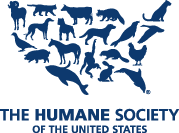Veterinary medicine has a long history dating back to at least 9000 BCE.
Sheepherders, although not veterinarians, used their crude medical skills to treat their animals. Translated hieroglyphs from 4000 to 3000 BCE show that Egyptians, with their more advanced knowledge of medicine, treated and maintained the health of their domestic animals.
Sanskrit texts (the language of the Hindu religion) found in India about 1500 BCE and Egypt’s Kahun Papyrus dated about 1900 BCE (the oldest known papyrus medical text) are probably the first written accounts of veterinary medicine. The Kahun Papyrus was divided into sections, each with a specific medical topic.
Asoka, India’s first Buddhist king, declared there was medicine for humans and another for animals. Where no medicine was available for either, he ordered healing herbs to be planted.
The early “veterinarians” were trained in obstetrics and named “overseer of cattle”. They watched over the pregnancies of the cattle and birth of their calves and were responsible for their health and survival.
Scraps of a papyrus dated about 1850 BCE and found by archaeologists proved to be a medical textbook disclosing that the Egyptians had a working knowledge of animal anatomy and recognized signs of some diseases in animals. They were able to use specific treatments for diseases.
The Romans, Greeks, Hebrews, Babylonians, Hindus and Arabs practiced animal medicine. In 3000 BCE, a Mesopotamian named Urdugaledinna was looked upon as an expert healer of animals.
As horses were economically important to people, in the Middles Ages, attempts were made to regulate and organize their treatment. In 1356, the Lord Mayor of London, upon hearing of the lack of proper care of horses, asked the farriers, who besides shoeing the horses, treated them, to create a collective to improve their treatment of the these valuable animals. By 1674, this led to an organization called the Worshipful Company of Farriers.
The veterinary profession officially began in 1761 in Lyon, France with the founding of the first veterinary school by Claude Bourgelet. The target study was disease in cattle, sheep and horses. Plagues in cattle were common in Europe. Microscopes invented in the 1590s were used to isolate organisms causing them and led to developing the first vaccine in 1712 to eliminate a plague in Europe.
Following the opening of the first veterinary school in France, schools were started in Germany, Sweden and Denmark. The London Veterinary College was established in 1791 and thus began animal medicine at a professional level. Horses were their focus but they eventually added the study and treatment of livestock and soon after, dogs and other animals.
The Veterinary College of Philadelphia was the first veterinary school in the United States. Established in 1852, it closed its doors in 1866. The oldest accredited veterinary school in the U.S. was established in 1883 – the School of Veterinary Medicine at the University of Pennsylvania. It is operating today as a well respected institution, continuing to advance veterinary medicine to the benefit of all.
In 1863 AVMA (American Veterinary Medical Association) was created. The USFDA (Federal Drug Administration) formed the Bureau of Animal Industry in 1884 to protect people from diseases caused by contaminated meat and to eradicate diseases in animals. While the Bureau only operated until 1900, the USFDA created the Center for Veterinary Medicine (CVM). In its capacity as part of the USFDA, the CVM approves animals products including drugs for use, publishes news and guides, reports on problems relating to pets and the animal industry, inspects manufacturing plants of animal food and treats to ensure sanitary conditions and proper labeling, conducts research and much more.
In the thousands of years of existence of treatment of animals’ medical needs, veterinary medicine has come a long way. In addition to all the modern methods of caring for animals, the knowledge gleaned from their care and treatment has been tremendously beneficial to human medicine and society.



